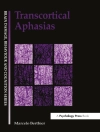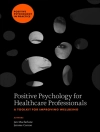‘[This book] provides a perceptive, research based, and pragmatic approach to working with couples seeking reconnection after years of childrearing….Marriage at Midlife should take center stage on every counselor’s bookshelf.’
– Kathleen M. Galvin, Ph D
Professor, Communication Studies,
Northwestern University
The middle period of married life-what the authors call the ‘centerstage’-is often the ‘make or break’ point in a lifelong relationship. Marriage at Midlife provides counselors, mental health professionals, and marriage educators with the tools they need to assist couples who are experiencing the challenges of the post-childrearing years. The authors take a resilience-based approach to help couples preserve and improve long, satisfying relationships.
This book is enriched with the authors’ experience with couples who have been married between 20 and 50 years. Each chapter contains an opening narrative about a real-life couple, a section identifying sources of distress, a section outlining the analytical tools needed for each challenge, and questions and exercises for clients. Throughout the book are bulleted lists with quick advice for couples on a range of topics, such as suggested shared activities or tips for managing stress.
Learn how to help couples:
Forgive past transgressions and choose new, meaningful, shared activities
Adapt to midlife challenges, such as job loss, relocation, and returning to school
Handle the stress of illness and caregiving
Redefine relationships with ‘boomerang kids, ‘ adult children, and grandchildren
With this book, counselors will obtain both the skills and the insight needed to help couples reimagine their relationships at this pivotal stage in their lives.
Cuprins
‘Contributors
Preface
Chapter 1: Guiding Perspectives and Analytical Tools
Defining the ”Centerstage” Marriage
The Empty Nest-an Empty Metaphor?
Our Research: How Did We Learn About Centerstage Marriages?
Five Couples: Five Different Challenges
How to Use This Book
A Guiding Perspective: Communicating Across the Life course
Accounting for Differences among Clients: Culture, Gender, and Religion
Understanding Centerstage Couples: Three Frameworks
”Best Practices” of Centerstage Couples
Concluding Thoughts: Remodeling the Empty Nest
References
PART 1: RECOUPLING: OPTIMIZING RELATIONAL PROCESSES
Chapter 2: Improving Communication
Reassessing Familiar Patterns
Building Communication Capacity
Sources of Distress
Analytical Tools
Working with Clients
Concluding Thoughts
References
Questions for Clients
Exercises
Defining Forgiveness as a Relational Negotiation
Why Forgive?
What Forgiveness Is Not
Sources of Distress
Analytical Tools
Working with Clients
Concluding Thoughts
References
Questions for Clients
Exercises
Chapter 4: Finding New and Meaningful Activities
Constraints on Activity During Childrearing
Midlife Transitions: Finding Fulfillment in New Patterns of Activity
Sources of Distress
Analytical Tools
Working with Clients
Emerging Opportunities for Meaningful Engagement: Examples for Clients
Significant Service
Concluding Thoughts
References
Questions for Clients
Exercises
PART 2: RETOOLING: ADAPTING to MIDLIFE EVENTS
Chapter 5: New Career Directions: Coping with Job Loss and Returning to School Job Loss
Returning to School
Sources of Distress
Analytical Tools
Working with Clients
Concluding Thoughts
References
Questions for Clients
Exercises
Chapter 6: Managing Boundaries: Boomerang Kids, Adult Children, and Grandparenting Boomerang Kids
Helping Adult Children
Grandparenting
Sources of Distress
Analytical Tools
Working with Clients
Concluding Thoughts
References
Questions for Clients
Exercises
Understanding the Relocation Experience
Chapter 7: Relocation at Midlife: Marking a New Era
Sources of Distress
Analytical Tools
Working with Clients
Concluding Thoughts
References
Sources of Distress
Analytical Tools
Working with Clients
Concluding Thoughts
References
Questions for Clients
Exercises
Chapter 9: Conclusion: Reimagining the Empty Nest: Helping Clients Think Differently
Alternative Metaphors
Best Practices Revisited
Appendix A: Resources
‘
Despre autor
Doug Kelley is Associate Professor of Communication Studies at Arizona State University’s West campus.












